Navajo military veterans
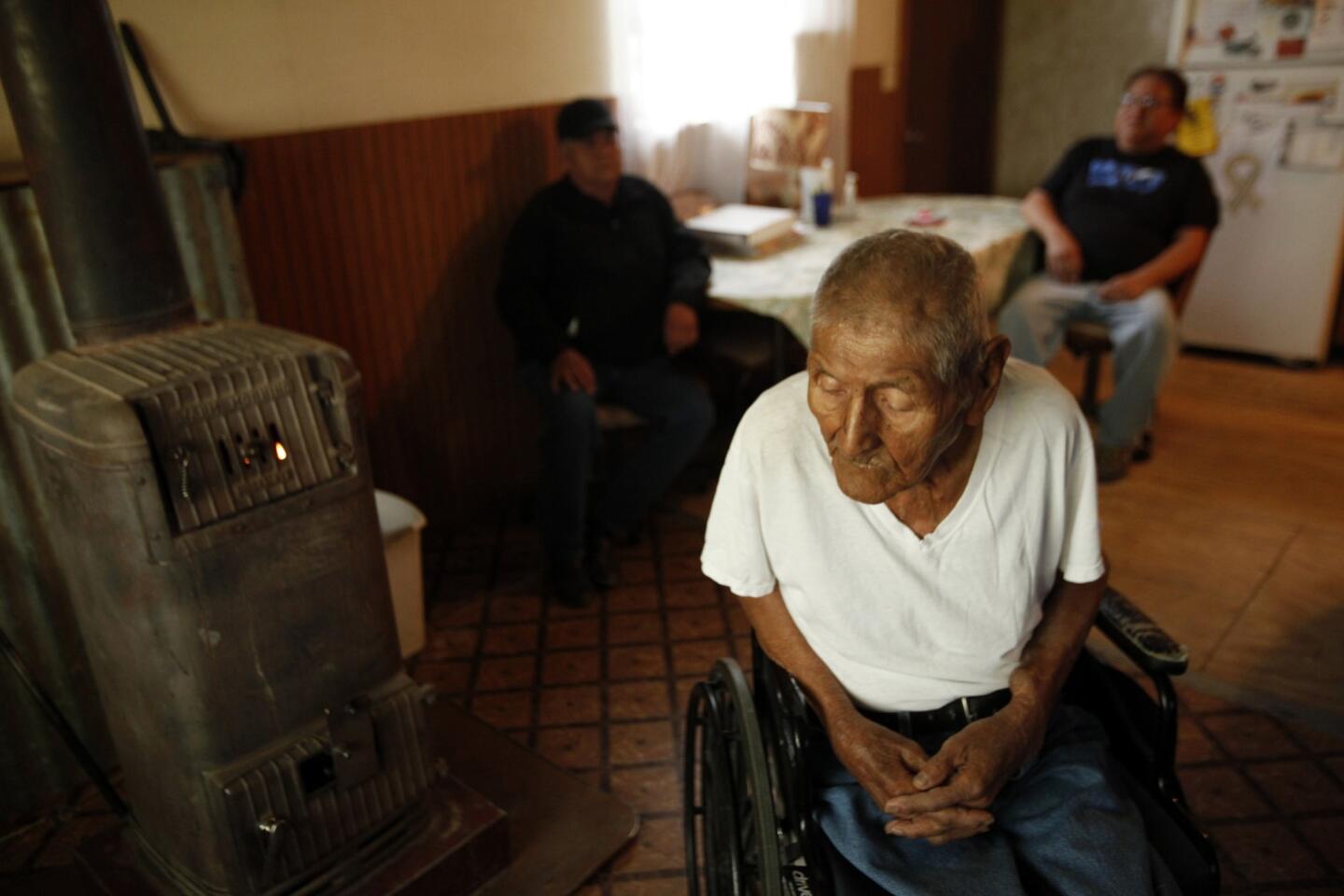
World War II veteran Tom Jones Jr., 89, was a Navajo code talker. The house he received as a veteran hasn’t been maintained; its only heat source is a wood-burning stove, and the hall is too narrow to accommodate his wheelchair. (Genaro Molina / Los Angeles Times)
Nearly 9,000 former service members live on the New Mexico-Arizona reservation, more than half of them in substandard conditions. Promised aid hasn’t materialized. Read story
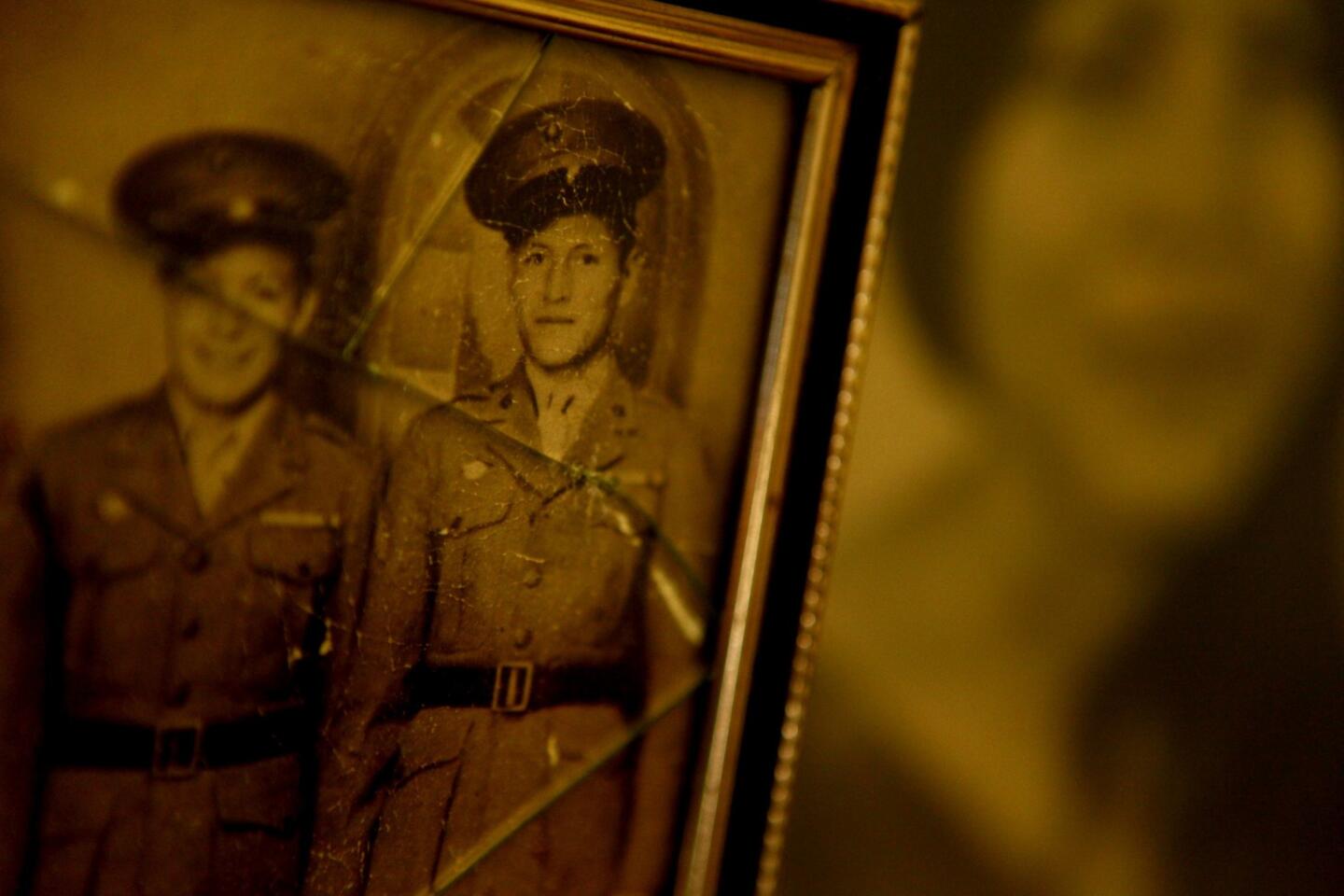
A photo shows Tom Jones Jr. during his World War II days. The Navajo code talker spent time on the front lines, including at Iwo Jima. (Genaro Molina / Los Angeles Times)
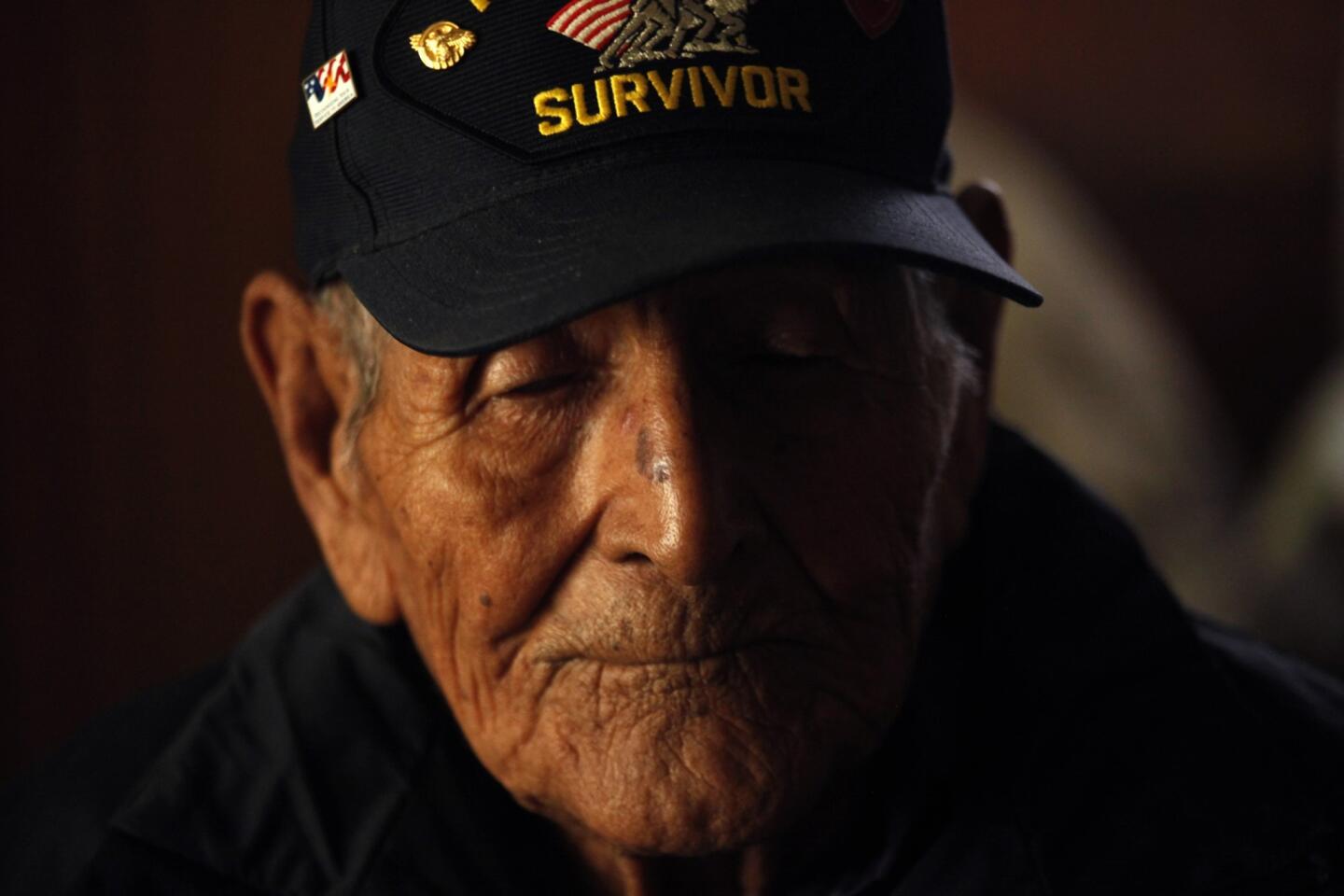
Tom Jones Jr. wears a hat that says “Iwo Jima Survivor.” Since a health downturn a few years ago, the 89-year-old has been unable to provide for himself. (Genaro Molina / Los Angeles Times)
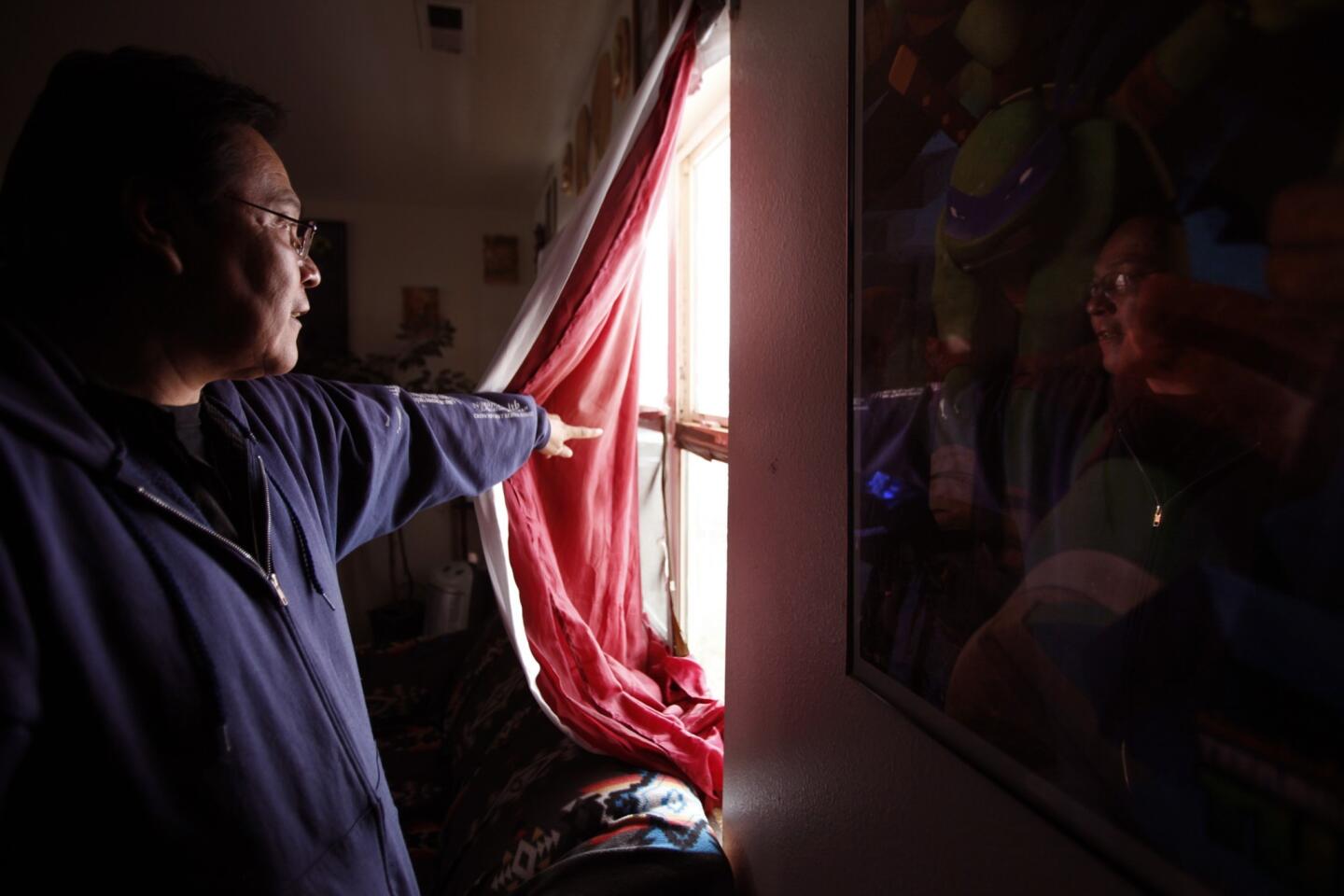
Paul Endito, a veteran of the Gulf War, has had to shore up window cracks with duct tape at the home his family shares with his mother-in-law on the Navajo reservation in Smith Lake, N.M. He works as a cook but doesn’t earn enough to get a place of his own for his wife and children. (Genaro Molina / Los Angeles Times)
Advertisement
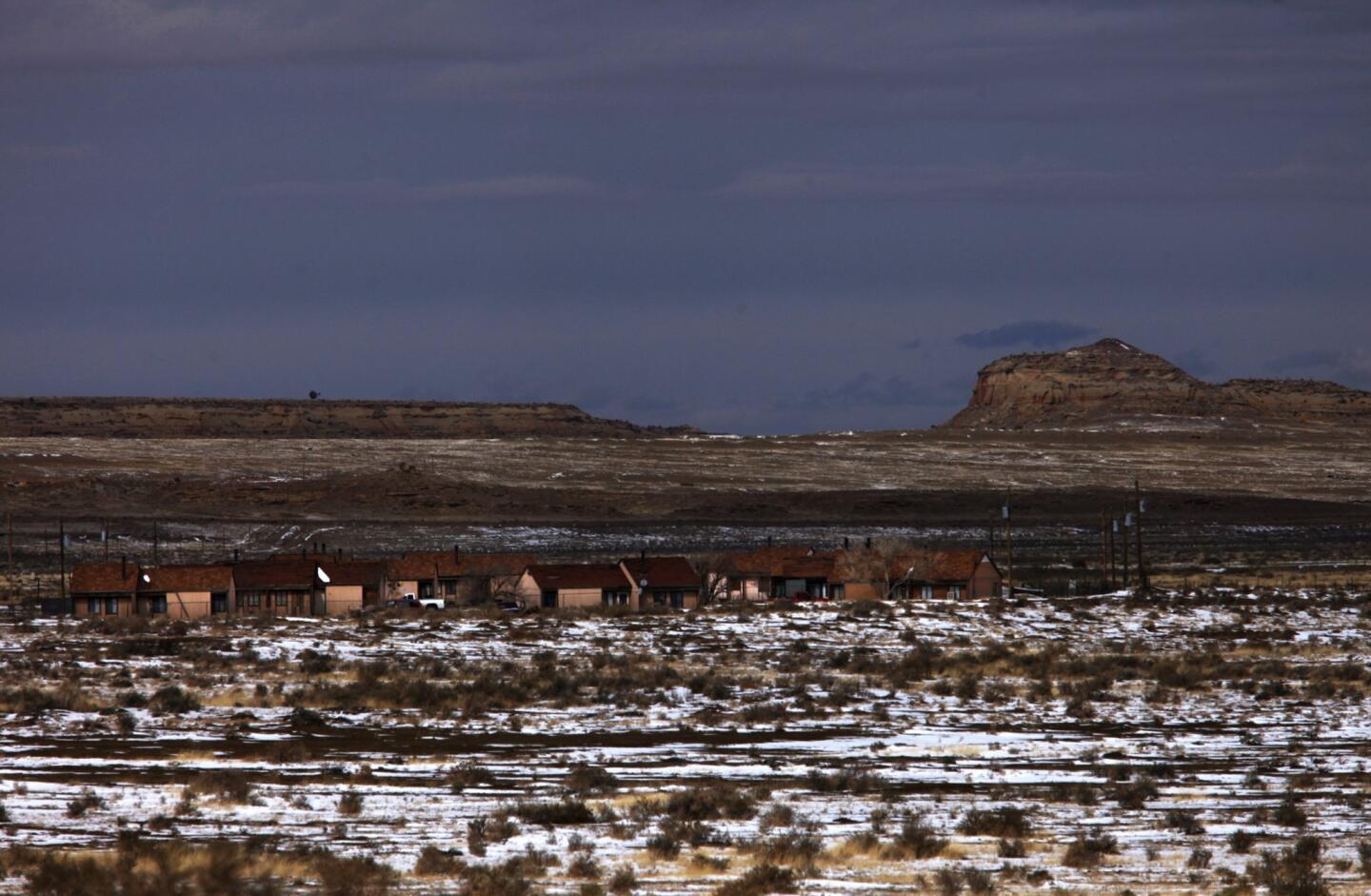
Gulf War veteran Paul Endito and his family live in the Little Water Housing community on the Navajo reservation in Smith Lake, N.M., shown against the backdrop of Heart Butte. (Genaro Molina / Los Angeles Times)
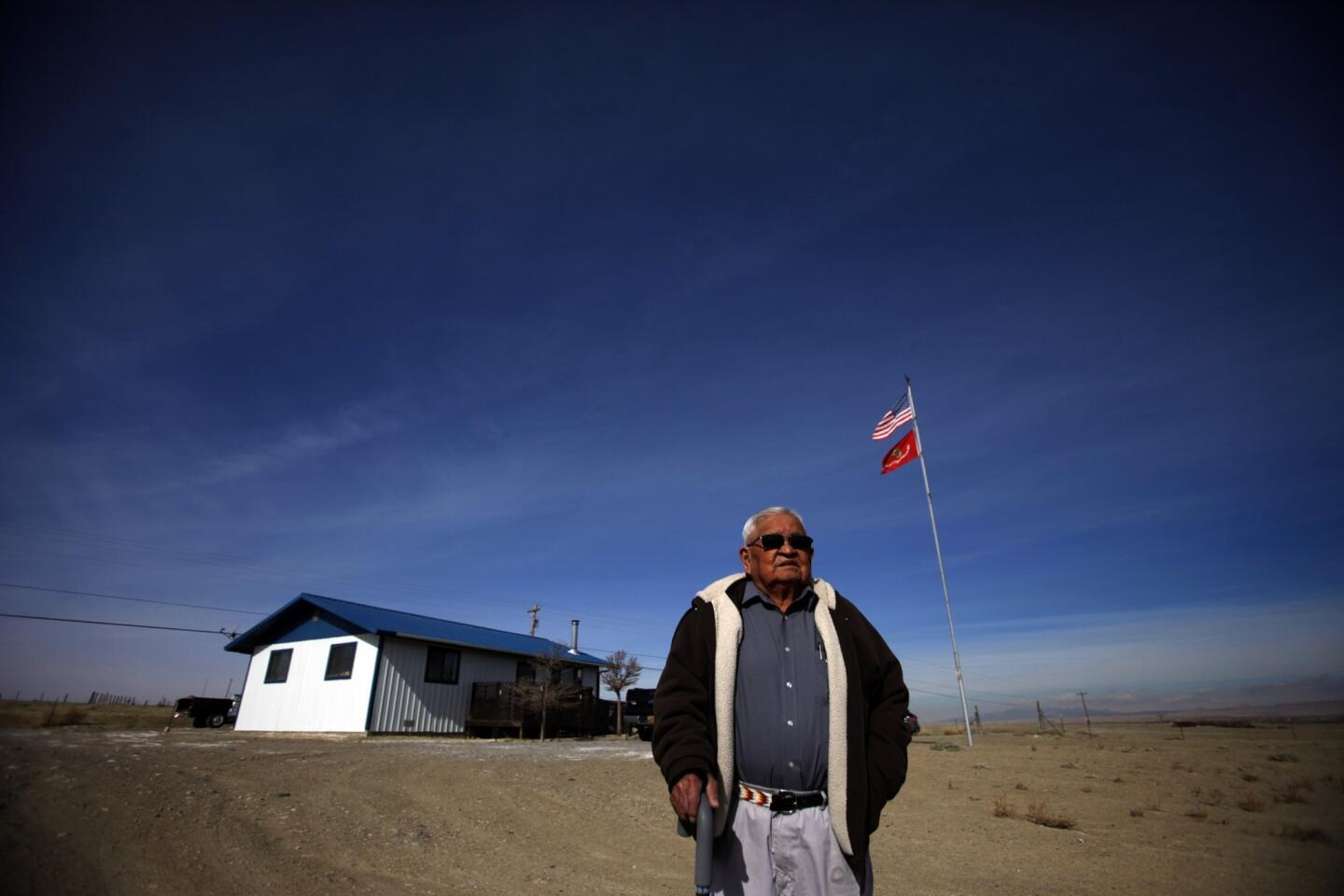
World War II veteran Samuel F. Sandoval, 90, a Navajo code talker shown at his home in Shiprock, N.M., is one of many Navajo veterans having trouble getting help with housing repair. Navajo Nation officials say they are hampered by a lack of funds. (Genaro Molina / Los Angeles Times)
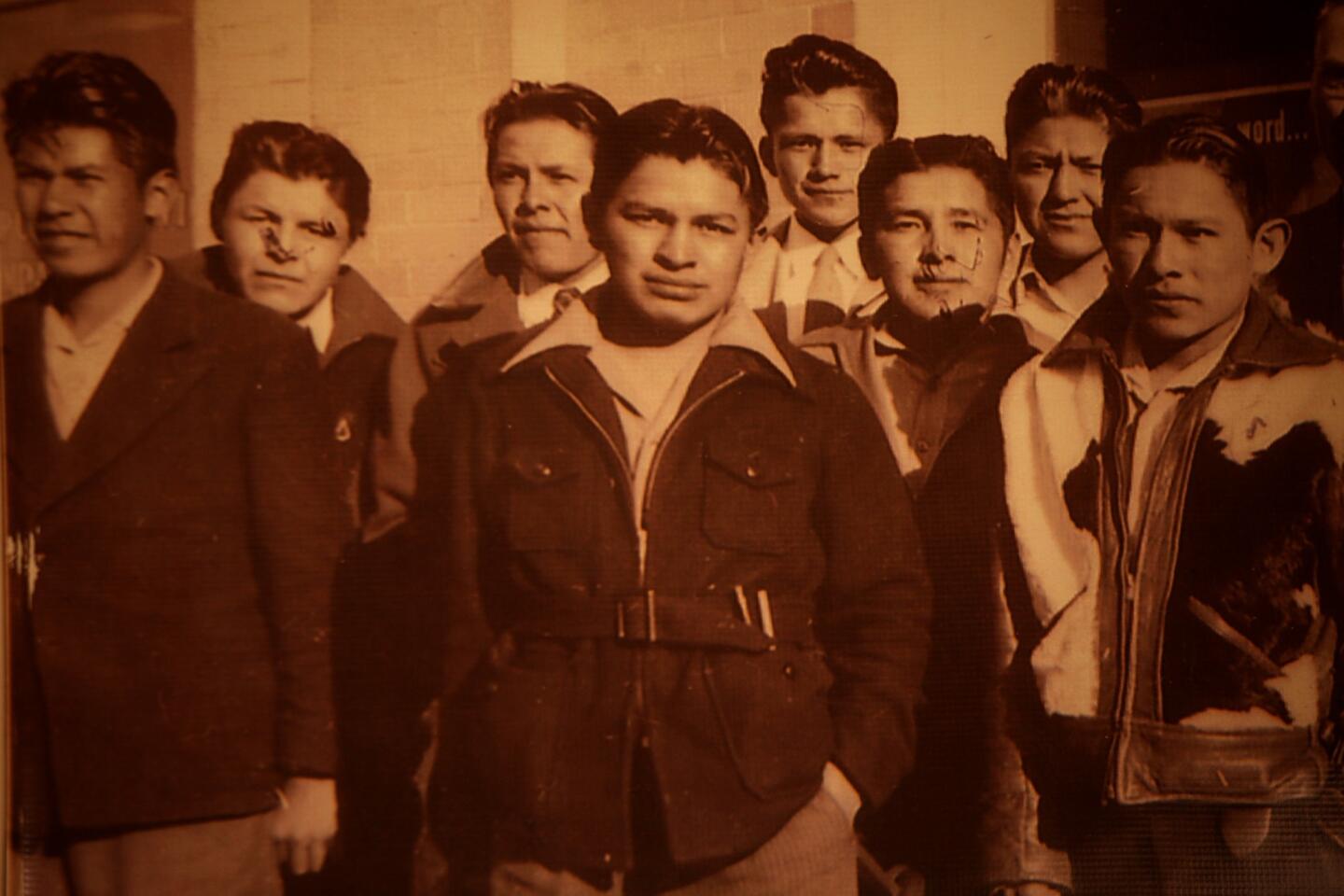
A photograph shows Samuel F. Sandoval, center, shortly before he joined the U.S. Marine Corps in 1943 as a Navajo code talker. (Genaro Molina / Los Angeles Times)
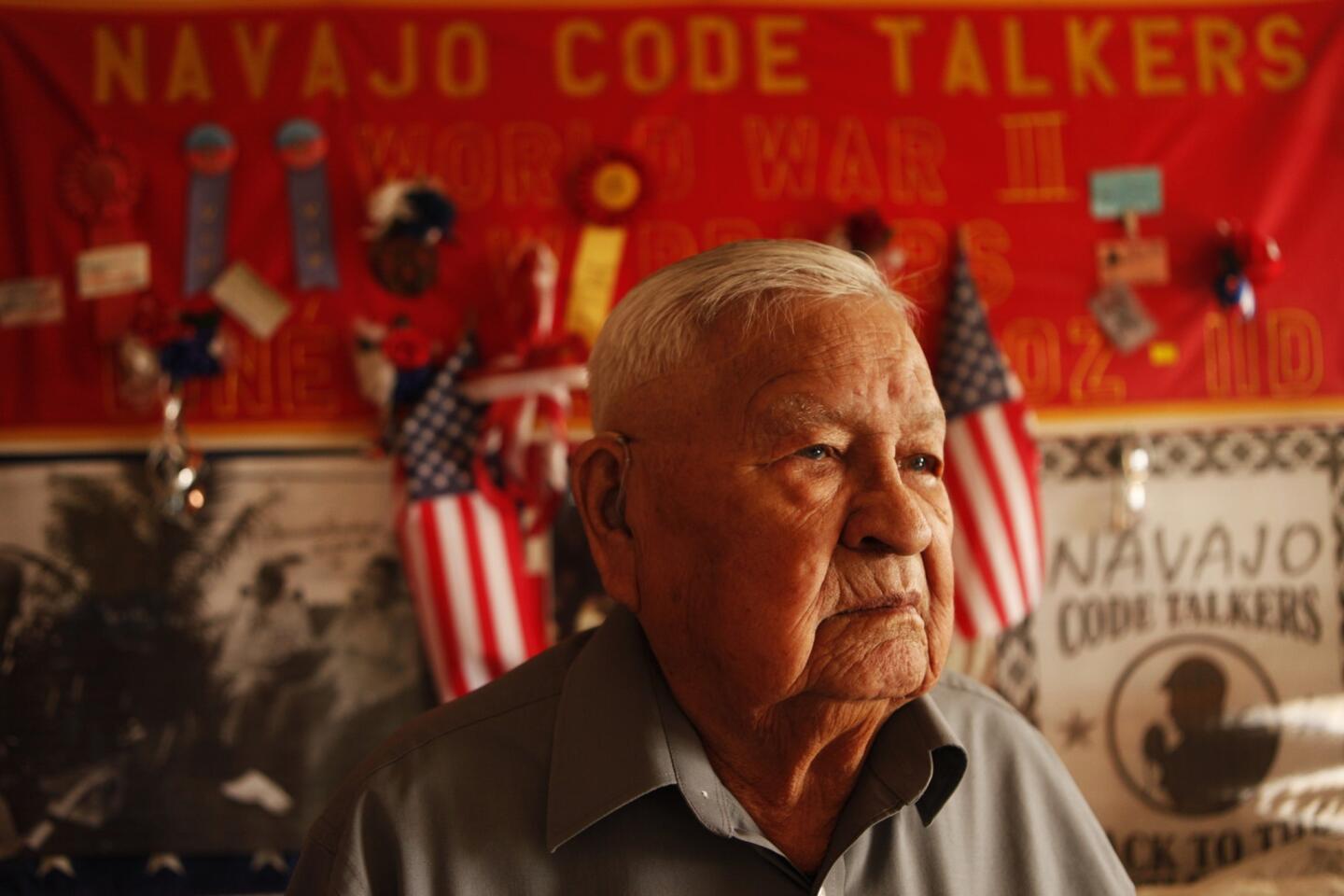
World War II veteran Samuel Sandoval, 90, at his home in Shiprock, N.M. (Genaro Molina / Los Angeles Times)







